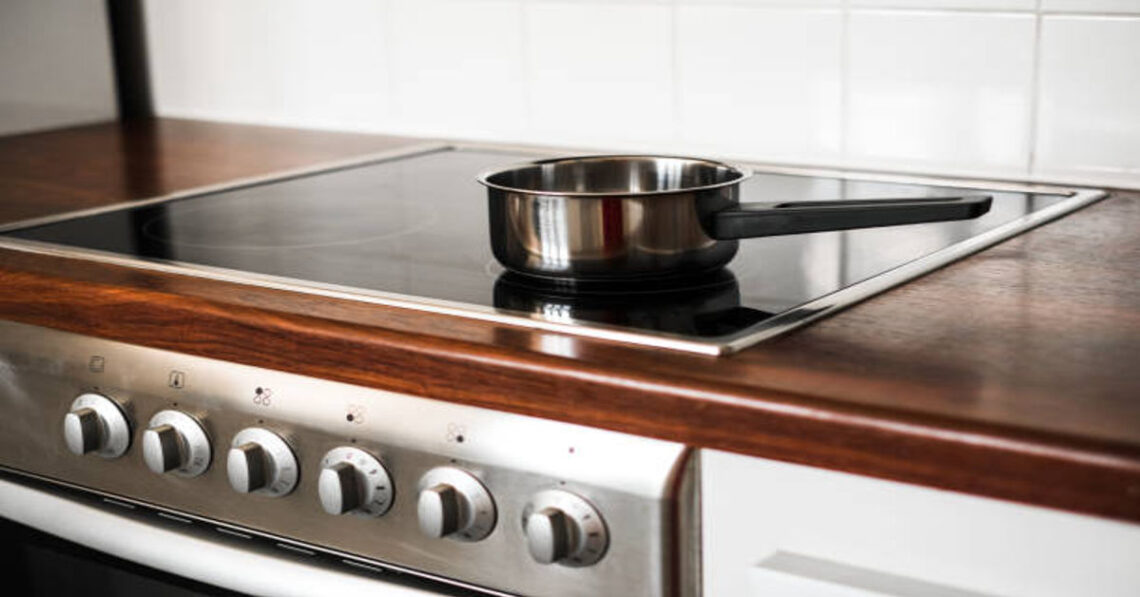An electric stove, also known as an electrical range, is one of the most common and efficient kitchen appliances used for cooking, baking, and heating food. Unlike traditional gas stoves that rely on open flames, electric stoves use electrical energy to generate heat through coils or smooth glass-ceramic surfaces. The evolution of electric stoves represents the modernization of kitchen technology, improving safety, cleanliness, and energy efficiency.
This detailed article explores how electric stoves work, their benefits, different types, comparison with gas stoves, installation and maintenance tips, safety guidelines, and ways to maximize efficiency. By understanding the complete dynamics of electrical stoves, homeowners can make informed decisions to enhance their cooking experience and reduce household energy costs.
1. Understanding the Electric Stove
An electric stove is a household cooking appliance that converts electrical energy into heat energy for food preparation. The heat is generated by passing an electric current through resistive heating elements, usually made from alloys like nichrome (nickel-chromium). This heat is transferred to cookware through conduction or radiation.
Electric stoves were first introduced in the early 20th century, but they gained mass popularity after the 1950s as homes increasingly adopted electricity. Modern stoves feature advanced temperature controls, digital timers, induction heating options, and energy-efficient designs that make them ideal for both small and large households.
2. Components and Working Principle
An electric stove has several key components working together to produce controlled heat for cooking. Below is a detailed look at the main parts and their functions:
| Component | Description |
|---|---|
| Heating Element | The main part that converts electricity into heat using resistance. Found as coils or ceramic plates. |
| Thermostat | Maintains the set temperature by regulating electrical current flow. |
| Control Knobs or Touch Panel | Allows the user to set temperature or power levels. |
| Power Cord | Connects the stove to the household electrical supply (usually 220–240V). |
| Indicator Light | Shows when the heating element is active. |
| Oven Compartment (in electric ranges) | Used for baking or roasting with separate heating coils. |
How It Works
- When you turn on the stove, electricity flows through the resistive heating element.
- The resistance in the element converts electrical energy into heat.
- This heat is transferred to cookware (pots or pans).
- The thermostat ensures stable temperature control, cycling power on and off as needed.
3. Types of Electric Stoves
There are several types of electric stoves available today, each with unique advantages:
| Type | Description | Key Features |
|---|---|---|
| Coil Stove | Traditional design with exposed metal coils. | Durable, low-cost, easy to replace elements. |
| Smooth-Top Stove | Flat ceramic or glass surface with hidden coils underneath. | Easy cleaning, elegant look, even heating. |
| Induction Stove | Uses electromagnetic induction to heat cookware directly. | Fastest, most energy-efficient, requires magnetic cookware. |
| Electric Range | Combination of stove and oven in one unit. | Multipurpose for cooking and baking together. |
| Portable Electric Cooktop | Single or double burner models ideal for small spaces. | Compact, travel-friendly, and plug-in ready. |
Each type caters to different household needs. For example, induction stoves are great for modern homes focusing on energy savings, while coil stoves suit budget-conscious families.
4. Advantages of Electric Stoves
Electric stoves provide numerous benefits that have made them a staple in modern kitchens:
a. Energy Efficiency
Electric stoves convert almost all supplied electrical energy into heat, with very little energy loss. Induction stoves, in particular, can achieve efficiency levels of 85–90%, higher than gas stoves.
b. Safety
Without open flames, electric stoves significantly reduce the risk of kitchen fires and burns. Many models include auto shut-off features and child safety locks.
c. Easy Cleaning
Smooth-top and induction models have flat surfaces that can be wiped clean easily. No soot or grease accumulation occurs as with gas burners.
d. Temperature Precision
Electric stoves offer stable temperature control. With induction and digital models, precise temperature settings can improve cooking quality.
e. Cost and Availability
Electric stoves are widely available at various price points, making them affordable. They also don’t require a gas connection, saving installation costs.
5. Electric Stove vs Gas Stove
The following table highlights the key differences between electric and gas stoves to help homeowners choose the best fit for their kitchen.
| Feature | Electric Stove | Gas Stove |
|---|---|---|
| Energy Source | Electricity | Natural Gas or LPG |
| Heat Control | Precise and consistent | Instant but less uniform |
| Safety | No flame, safer for kids | Open flame, higher risk of burns |
| Maintenance | Easy to clean | Requires regular cleaning of burners |
| Efficiency | 70–90% | 40–55% |
| Environmental Impact | No emissions during use | Produces carbon dioxide |
| Cooking Speed | Moderate to fast (induction fastest) | Very fast heating response |
| Installation | Simple plug-in setup | Needs gas line and ventilation |
Conclusion: Electric stoves are ideal for clean, modern, and safe kitchens, while gas stoves are better for chefs who prefer instant heat response.
6. How to Choose the Right Electric Stove
Selecting the right model involves evaluating several practical factors:
- Type and Size: Consider the size of your kitchen and the number of burners you need. Compact cooktops are suitable for small kitchens, while electric ranges are better for large families.
- Power Rating: Higher wattage offers faster heating but increases power consumption. Look for energy-efficient models with smart sensors.
- Cookware Compatibility: Induction stoves need magnetic cookware (cast iron or stainless steel).
- Safety Features: Choose models with overheat protection, child locks, and auto shut-off.
- Control Options: Decide between manual knobs or digital touch controls.
- Design and Maintenance: Smooth tops are stylish and easy to maintain, while coils are rugged and inexpensive to replace.
7. Installation and Safety Tips
Proper installation and safe operation are essential for efficiency and longevity.
Installation Guidelines
- Use a dedicated electrical circuit with proper grounding.
- Avoid using extension cords for heavy-duty stoves.
- Ensure ventilation if used in enclosed kitchens.
- Place the stove on a flat, stable surface.
- Keep flammable materials away from heating zones.
Safety Tips
- Always switch off the stove after cooking.
- Avoid touching hot surfaces directly.
- Do not overfill pots or leave food unattended.
- Clean spills immediately to prevent residue buildup.
- Keep children away from operating areas.
8. Cleaning and Maintenance
Maintaining an electric stove ensures performance and safety. Here’s how to clean different types effectively:
| Stove Type | Cleaning Method |
|---|---|
| Coil Stove | Remove coils after unplugging, wipe with mild soap, and clean drip pans. |
| Smooth-Top Stove | Use soft cloth with ceramic cleaner, avoid scrubbing pads that may scratch. |
| Induction Stove | Clean with damp cloth, never use abrasive cleaners. |
| Oven (Electric Range) | Use the self-cleaning function or baking soda paste for manual cleaning. |
Tip: Clean spills immediately before they harden or burn onto the surface.
9. Energy Efficiency and Cost Saving
Using your electric stove wisely can help save power and lower utility bills.
Energy-Saving Tips
- Use flat-bottomed cookware for even heat transfer.
- Match pan size to the heating element.
- Cover pots with lids to reduce cooking time.
- Turn off the stove a few minutes before finishing — residual heat will complete the cooking.
- For induction stoves, choose cookware that fully covers the magnetic field area.
Cost Comparison Example
| Type of Stove | Average Efficiency | Estimated Monthly Cost (for 2 hrs/day use) |
|---|---|---|
| Electric Coil | 70% | Moderate |
| Smooth-Top | 80% | Moderate to Low |
| Induction | 90% | Lowest |
10. Common Problems and Solutions
| Issue | Possible Cause | Solution |
|---|---|---|
| Stove not heating | Power supply failure or faulty coil | Check plug, replace element if needed |
| Uneven heating | Dirty surface or damaged element | Clean properly or replace damaged part |
| Indicator light not working | Burned-out bulb | Replace indicator |
| Stove trips circuit breaker | Overload or faulty wiring | Use dedicated circuit, inspect wiring |
| Induction not recognizing pan | Non-magnetic cookware | Use compatible cookware |
11. Modern Features in Electric Stoves
Today’s electric stoves come equipped with advanced features:
- Touch Controls and LED Displays – Easy operation and modern aesthetics.
- Smart Connectivity – Control via mobile apps, timers, and voice assistants.
- Auto Heat Adjustments – Intelligent sensors detect temperature and adjust power output.
- Dual and Triple Ring Elements – Allow different pan sizes on one burner.
- Self-Cleaning Ovens – Burn off residues automatically at high temperatures.
- Eco Mode – Reduces standby power consumption.
12. Environmental Impact
Electric stoves produce zero on-site emissions, making them environmentally friendlier than gas stoves. If powered by renewable electricity (solar, wind, hydro), their total carbon footprint becomes minimal. Additionally, the absence of combustion reduces indoor air pollution, improving respiratory health for household members.
13. Future Trends in Electric Cooking
The future of electric stoves is moving toward smart and sustainable technologies. Integration with home automation, voice controls, and AI-based cooking assistance will become common. Induction and hybrid designs will dominate due to their speed and efficiency. Manufacturers are also focusing on recyclable materials, minimal standby power, and safety-first designs.
Conclusion
Electric stoves have revolutionized modern kitchens by combining convenience, safety, and efficiency. Whether it’s a simple coil model or an advanced induction system, electric stoves provide precise control and clean operation without the hazards of open flames. For homes looking to reduce carbon emissions and improve cooking consistency, switching to an electric stove is a practical and eco-friendly choice.
With proper installation, regular maintenance, and mindful energy use, an electric stove can last many years while providing superior cooking performance and contributing to a safer, cleaner home environment.
Frequently Asked Questions (FAQs)
1. How long do electric stoves usually last?
A well-maintained electric stove typically lasts 13 to 20 years. The lifespan depends on usage, cleaning frequency, and power quality. Replacing worn-out heating elements or control knobs can further extend its durability.
2. Are electric stoves safe for households with children?
Yes. Electric stoves are safer because they lack open flames. Models with child locks and cool-to-touch induction surfaces are ideal for homes with kids.
3. Can I use normal cookware on an electric stove?
For coil and smooth-top stoves, yes, regular flat-bottom cookware works fine. However, induction stoves require magnetic cookware such as stainless steel or cast iron.
4. Do electric stoves consume more electricity?
While they do use electrical power, modern models are designed to be energy-efficient, especially induction types. Using proper cookware and cooking practices further reduces electricity consumption.
5. How can I clean burnt stains on a smooth-top electric stove?
Let the surface cool, then apply a ceramic cleaner or baking soda paste. Use a soft cloth or scraper designed for glass surfaces to remove residue without scratching.




